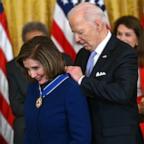Health Reform: What's in It for You?
Dec. 1 -- MONDAY, Nov. 30 (HealthDay News) -- The two health reform bills moving through the U.S. Congress differ in a number of ways but achieve the same goal: a dramatic reduction in the number of uninsured Americans.
Legislation approved by the House of Representatives earlier this month would expand coverage to 96 percent of Americans. The Senate is preparing to debate a proposal to expand coverage to 94 percent of Americans.
"These bills build on the current system of providing insurance in the U.S.," a system that includes Medicaid, employer-sponsored health insurance and individually purchased health plans, explained Elizabeth A. McGlynn, an associate director at RAND Health in Santa Monica, Calif.
"I think these bills do not constitute a radical change but rather a 'build out' of our current system," she added.
The bills require most Americans to have health insurance or pay penalties for failing to comply. The House imposes a fine of 2.5 percent of adjusted income. The Senate phases in penalties, which rise to $750 a year starting in 2016 and are adjusted annually for cost of living.
People of modest means who don't have health insurance may qualify for coverage under Medicaid. The House bill expands Medicaid eligibility to 150 percent of the federal poverty level. In 2009, that's $16,245 for an individual or $33,075 for a family of four. The Senate bill is slightly less generous, boosting Medicaid eligibility to people with incomes at or below 133 percent of the federal poverty level, or $14,403 for an individual and $29,326 for a family of four.
The bills also benefit people who lose health insurance because their employers no longer offer coverage or go out of business, said Warren Greenberg, professor emeritus of health policy at George Washington University in Washington, D.C. These people would be eligible to purchase health insurance through an insurance exchange, he explained.
Under both bills, individuals and families with incomes up to 400 percent of the federal poverty level would be eligible for help paying for plan premiums and other cost-sharing through national or state-based exchanges.




